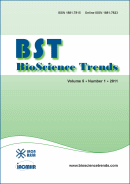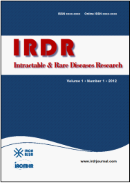Drug Discov Ther. 2015;9(6):386-390. (DOI: 10.5582/ddt.2015.01062)
Inhibitory effects of several saturated fatty acids and their related fatty alcohols on the growth of Candida albicans.
Hayama K, Takahashi T, Yui S, Abe S
We examined the effect of 5 saturated fatty acids and their related alcohols on the growth of Candida albicans. The inhibitory effects of these compounds against the yeast and hyphal growth forms of C. albicans were examined using the modified NCCLS method and crystal violet staining, respectively. Among these compounds, capric acid inhibited both types of growth at the lowest concentration. The IC80, i.e., the concentration at which the compounds reduced the growth of C. albicans by 80% in comparison with the growth of control cells, of capric acid for the hyphal growth of this fungus, which is indispensable for its mucosal invasion, was 16.7 μM. These fatty acids, including capric acid, have an unpleasant smell, which may limit their therapeutic use. To test them at reduced concentrations, the combined effect of these fatty acids and oligonol, a depolymerized polyphenol, was evaluated in vitro. These combinations showed potent synergistic inhibition of hyphal growth [fractional inhibitory concentration (FIC) index = 0.319]. Our results demonstrated that capric acid combined with oligonol could be used as an effective anti-Candida compound. It may be a candidate prophylactic or therapeutic tool against mucosal Candida infection.







